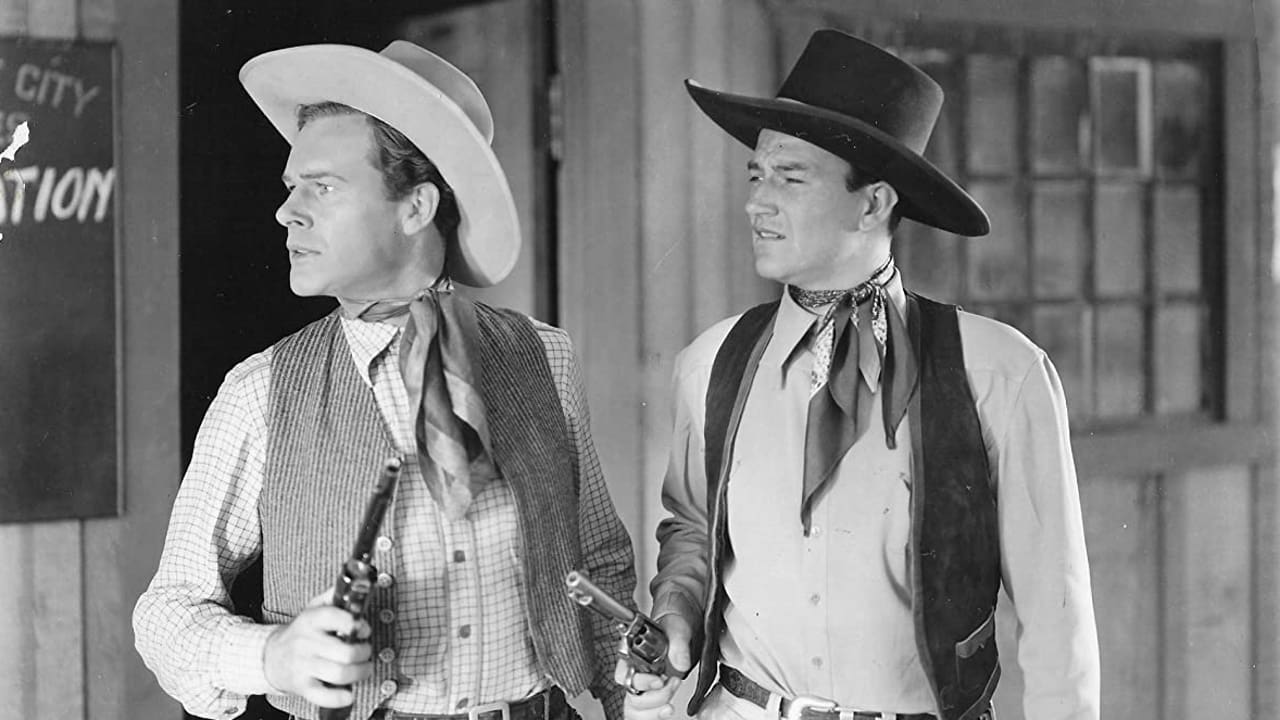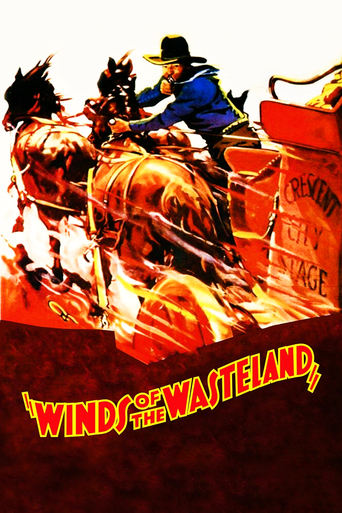

Sorry, this movie sucks
... View MoreGood concept, poorly executed.
... View MoreA film with more than the usual spoiler issues. Talking about it in any detail feels akin to handing you a gift-wrapped present and saying, "I hope you like it -- It's a thriller about a diabolical secret experiment."
... View MoreMostly, the movie is committed to the value of a good time.
... View MoreI much prefer the alternative title of "Stagecoach Run", even better "The Great Stagecoach Race", as several reviewers titled their reviews. This is an early John Wayne Republic western. After this film, Wayne would move to Universal for a series of films in late '36 and '37, returning to Republic in '38....... It doesn't take long to figure out who the chief villain is: Douglas Cosgrove, as Cal Drake, who owns the stage line headquartered at the fictional town of Buchanan City, presumably in California. Wayne and his buddy Larry(Lane Chandler) are recently retired Pony Express riders, after the new telegraph line from the eastern US knocked them out of work. (Besides, they were way too heavy to make it as such riders!). Wayne decided they should save their collective 4 Pony Express ponies given them as a retirement present to pull a stage in a proposed new stage line. They can't guess what all tricks Drake will try to ensure that their stage line, if it gets off the ground, will fail. He offers to sell them the franchise for his Buchanan City to Crescent City run for $3000.,$1000 due immediately. He showed them some literature that said Crescent City had a population in excess of 3000. They decided to buy it, without first checking out Crescent City, a bad mistake! They found that the population had shrunk to 2: an eccentric old man, called Rocky, and another older man: Dr. Forsythe. Wayne finds a skunk residing in the mothballed coach. This skunk or its lingering smell would surface several additional times, including the last frames.........They did a trial run from Crescent City to Buchanan. Drake's henchmen weren't very friendly, and Wayne had to fight one. However, he did get his first passenger: Dr. Forsythe's daughter, Barbara(Phyllis Fraser): a knockout blond, looking much like Ginger Rogers, who was her cousin. She smelled skunk inside the coach, so requested to ride up front with Wayne. Thus, they got to introduce themselves. Boy, was she horrified when she saw Crescent City! She tried to talk her father into leaving, with no luck..... Somehow, Rocky found a flier announcing a race contest between stagecoaches to carry the mail between Buchanan City and Sacramento. The winner would get $25,000. plus the contract. It turned out that the only 2 contestants were Drake and the Crescent City line. You can bet that Drake and his henchmen did everything they could think of to knock Wayne and his coach out of the race. When these didn't work, they tried a variety of tricks during the race, to little avail. Of course, Wayne wins, by a head, and ends up with Barbara in his arms. I won't detail the various tricks Darby's men tried. See the movie to find out. It's available at YouTube. Wayne, himself, had a trick up his sleeve to induce more people to locate in Crescent City. He did a good deed for the telegraph linemen, and talked the supervisor into stringing the line through Crescent City, rather than Buchanan.......I'm surprised that Barbara's father wasn't killed before the ending, thus symbolically transferring Barbara's affection from him to Wayne.
... View MoreStrong story line that benefits from Lone Star's alliance with Republic Pictures. Poverty row Lone Star usually emphasized action at the expense of story-line. This resulted in lots of exciting chases, but often with little understanding of why. Here, however, the plot is very well developed with believable characters and good action. It's an excellent sketch of how guts, risk, and ingenuity helped transform an abandoned ghost town into a vibrant new community. The screenplay also does a nice job of showing the challenges of rebuilding a frontier town without losing the conventions that entertained kids of the time. Wayne delivers a nicely appropriate turn as the driving force behind the redevelopment, along with Lane Chandler as his buddy. This film especially shows Wayne's charm before the big-money responsibility of super-stardom made him more serious. Final stage race is well conceived along with how reviving the town also restores self-confidence of its inhabitants. Very positive story-line unusual for a B-Western of the time.
... View MoreThis is my favorite B-Rater from the 30's of John Wayne!!!!! Ilove this movie, and the COach race and all, action pack john wayne 54 Minute movie that will keep u interested all through the movie! I have the pleasure to Own the VHS Copy of this movie and all its B-Rating Oater Glory right now!!!!!! John Wayne is my favorite actor of the 30's always have been and always will be. And for who ever doesn't like this movie or John wayne, then you really don't know good from bad!!!!!On a end note, who ever likes b-rated westerns from the 30's this is a great choice to pick.I HOPE THIS Review Helps you!!!!!!!
... View More"Winds of the Wasteland" was made following the 1935 merger of Lone Star/Monogram and Mascot Pictures into Republic Pictures. With the added resources of the old Mascot serial group, the production values of John Wayne's series improved greatly. The budgets were certainly bigger and that can be seen in this particular entry. The story has two ex Pony Express riders, John Craig (Wayne) and Larry Adams (Lane Chander) starting up a stagecoach line. They are duped into signing an agreement with bad guy Drake (Douglas Cosgrove) to operate the line between two towns one of which is deserted except for the disgruntled doctor (Sam Flint) and jack of all trades Rocky (Lew Kelly). Doc's daughter Barbara (Phyllis Fraser) arrives unannounced and tries to convince her father to return east with her. Craig convinces them to remain and await the results of the upcoming stagecoach race for a $25,000 mail contract. Drake, along with his henchmen Bob Kortman and Yakima Canutt, among others, try to thwart our hero at every turn. The highlight of the film, and a sequence that sets it apart, is the climatic and very well staged race between Drake's coach and that of Craig. Veteran director Mack V. Wright gives us plenty of action and a realistic race to boot. Having Yakima Canutt around meant many visually exciting stunts. The outcome of the race of course is never in doubt nor is the fate of the villains. Jon Hall (using the name Charles Lochner), appears briefly at the beginning of the movie as a Pony Express rider who is seen talking to Wayne and Chandler. Also in the same sequence is veteran "B" western performer Ed Cassidy. This was one of the best of Wayne's early "B" westerns.
... View More